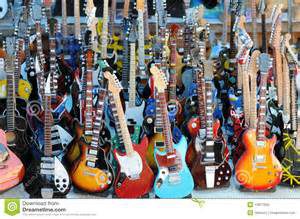 So, you’re going to get an instrument! Terrific – may it bring you a lifetime of pleasures! Have you decided how you’ll acquire it? There are several ways, and they all have their pro’s and con’s…..
So, you’re going to get an instrument! Terrific – may it bring you a lifetime of pleasures! Have you decided how you’ll acquire it? There are several ways, and they all have their pro’s and con’s…..
Buy – there’s quite a lot of variations on this theme:
buy in person – usually, this will mean going to a musical instrument store and picking it out for yourself. In many cases, this will be a small, mom-and-pop type of store, few if any employees, and mostly they will specialize in a group of instruments. Some carry only the guitar-amp-drum varieties of instruments (called a ‘rock shop’ in the trade), some might specialize in the bluegrass/country types of instruments. This is where you’d find acoustic guitars, mandolins, dulcimers, banjos, violins (although do not attempt to buy anything for the school orchestra here), upright basses, and maybe some drums.
Fewer in number will be the stores in the ‘school music’ category. These outfits often have a larger staff of employees, and likely carry pianos, possibly home organs, plus the instruments for the school band and orchestra: flutes, 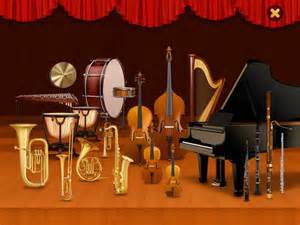 clarinets, saxophones, oboes, bassoons, trumpets, French horns, trombones, baritone horns, tubas, violins, cellos, plus drum and bell kits, print music, and they likely have a large crop of teachers giving lessons on the premises. All these types of stores are where you can get your hands on the instruments, try them out, and maybe get a teacher’s opinion on the one you’re looking at.
clarinets, saxophones, oboes, bassoons, trumpets, French horns, trombones, baritone horns, tubas, violins, cellos, plus drum and bell kits, print music, and they likely have a large crop of teachers giving lessons on the premises. All these types of stores are where you can get your hands on the instruments, try them out, and maybe get a teacher’s opinion on the one you’re looking at.
Buy online – I realize I’m walking a razor edge here, because you’re reading this online, but this is my least favorite method, for a couple of reasons:
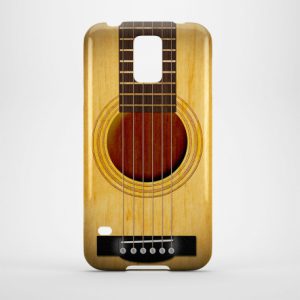 you don’t get to have the instrument in your hands. This can be made a little better by going to the smaller stores, picking out the one you like, trying it out, and then doing the research online to find the exact make and model you’ve decided on. Still, there’s enough variation between individual instruments that despite having done all that research, you could end up with one that doesn’t feel or sound like the one you picked out locally. Then you’d have to deal with the return hassle, plus trying to get your credit card charges refunded.
you don’t get to have the instrument in your hands. This can be made a little better by going to the smaller stores, picking out the one you like, trying it out, and then doing the research online to find the exact make and model you’ve decided on. Still, there’s enough variation between individual instruments that despite having done all that research, you could end up with one that doesn’t feel or sound like the one you picked out locally. Then you’d have to deal with the return hassle, plus trying to get your credit card charges refunded. - You’re killing the local music store when you do that. Buying from the locals keeps them in business (pays their bills and feeds their families), keeps their employees on the job, keeps the sales tax collected in your community, gets you local administration in case a warranty situation develops, and builds a relationship in the
 local musical community (hey, they’re musicians, too!) Not having the instrument in your hands gets you in some trouble, because the positive feedback loop that comes from holding the vibrating instrument next to your body while you are making it vibrate, keeps you from forming that emotional bond with it which helps you create emotion in others – which is why you play in the first place, right? The exception to this is electronic instruments – keyboards, workstations, sequencers, and like that. These behave more like cell phones, in that a given model will perform exactly the same, no matter where you buy it.
local musical community (hey, they’re musicians, too!) Not having the instrument in your hands gets you in some trouble, because the positive feedback loop that comes from holding the vibrating instrument next to your body while you are making it vibrate, keeps you from forming that emotional bond with it which helps you create emotion in others – which is why you play in the first place, right? The exception to this is electronic instruments – keyboards, workstations, sequencers, and like that. These behave more like cell phones, in that a given model will perform exactly the same, no matter where you buy it.
Buy used – this, too, has a number of variations.
- Buy from a local store. Most local music stores have a number of used instruments in stock. Generally, these will have been refurbished by their in- house repair shop, or sent out to a shop that works for music stores. Often, they will come with some kind of limited warranty. Ask to have a look at the fine print on that – for a beginner, you’d want some sort of coverage for accidents. Sometimes, these used pieces will come in a new case. Be sure you buy it with all the accessories needed to start playing right away. Clarinets, for example, should come
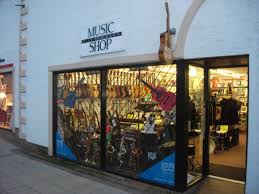 with a decent mouthpiece, a ligature (holds the reed on), a cap (to protect the expensive-to-replace mouthpiece), a couple of reeds, and a tube of cork grease.
with a decent mouthpiece, a ligature (holds the reed on), a cap (to protect the expensive-to-replace mouthpiece), a couple of reeds, and a tube of cork grease. - Buy from an auction-type website, like Ebay. Be careful here, not all is as it seems on some of the listings on sites like these. For example, as I’m writing this, there are 5,140 listings on Ebay for clarinets – this includes all kinds of clarinets – soprano, alto, bass, contra alto, contrabass, new, used, refurbished, parts only, and every kind of brand name imaginable. You can buy a Vito clarinet (well-respected, American brand, no longer made), for anywhere between $5 and $495. What’s the difference? The $5 one is likely broken or missing pieces, and could cost several hundred dollars to fix. The $495 one is likely refurbished (polished keys and other metal parts, all new pads, all new corks, adjusted and tested), probably has a new case, and has all the other bits included as discussed above, is probably being sold by an independent repair shop, AND likely comes with a warranty. Again, be sure of what you’re buying. When in doubt about online instruments, check with someone who’s done it, there’s a lot to look for when dealing online.
- Buy from a friend or relative. Have you ever borrowed money from a relative? Loaned money to one? The same sort of emotional entanglements can become a part of this instrument transaction. Be sure each party understands that it’s a simple business transaction. The used instrument will likely need
 repairs, both parties need to know who’s responsible for those costs, and what the return policy is, if any. Then get it to a musical instrument repair shop for an independent evaluation.
repairs, both parties need to know who’s responsible for those costs, and what the return policy is, if any. Then get it to a musical instrument repair shop for an independent evaluation. - In all things on this site, when I’m talking about repairs, I’m referring to a repair shop that is not attached to a music store – generally in its own building or space – which specializes solely in musical instruments. Mr. Fix It, who works on toasters and vacuum cleaners, is not equipped with the tools, parts, supplies, and understanding of instruments, and is not going to be able to handle any kind of instrument repair. Mr. Fix It is a wonderful guy, but not the right person for these jobs. For school band instruments, seek out a technician who’s a member of NAPBIRT, the National Association of Professional Band Instrument Repair Technicians – http://www.napbirt.org. Membership in this organization indicates that the technician is dedicated to continuing education and technical improvement in their craft. Guitar repair issues should head for someone who has the same kind of interests in their craft, and is
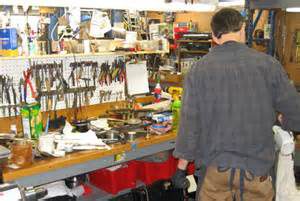 a member of the Guild of American Luthiers – luth.org.
a member of the Guild of American Luthiers – luth.org.
– we welcome your comments!

Hi, Maureen, and thanks for your interest! Renting an instrument has many advantages, as you point out. In addition, some types of instruments (and some types of rental contracts) can be swapped out for different types or different levels (step-up or professional quality) based on the needs and interests of the student. Music is something that can be enjoyed for the rest of one’s life!
Buying a musical instrument can be quite an expense. I play piano and when growing up both my brother and I started at an early age to take piano lessons. Even back then my parents had the option of renting a piano which they did. Buying a piano is an expensive undertaking and if your children just have a passing interest parents are wise not to run out and buy a piano. My brother and I stuck to the lessons so after awhile they did buy us a piano.
Learning to play a musical instrument is a great outlet and I think if you have a child that shows even a moderate interest you should let them have a chance at learning. Me personally I think renting is the way to go when first starting out.